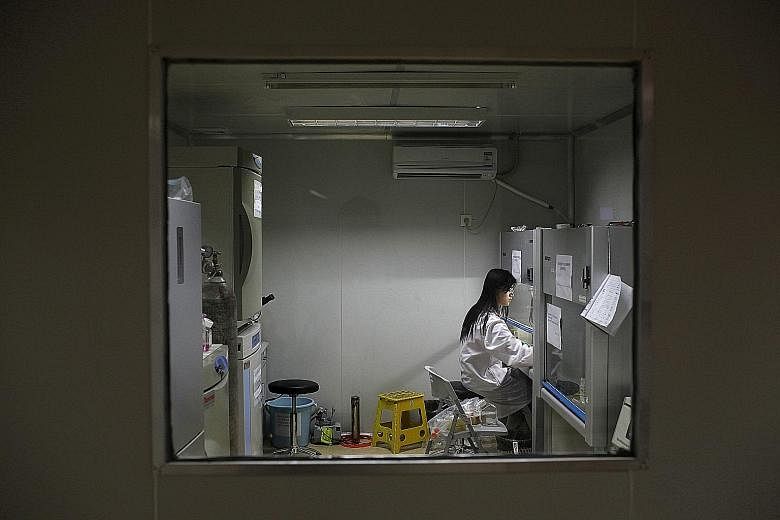SHANGHAI • China, already a global powerhouse in high-tech areas from solar panels to bullet trains, is turning its industrial might to the challenge of making more of its own drugs for a vast and ageing population.
Given the 10 years or more it typically takes to bring a new medicine to market, original "Made in China" treatments will not arrive overnight, but multinationals are already encountering more competition from local generic drugs that look set for a quantum leap in quality.
The stakes are high. China is the world's second-biggest drugs market behind the United States, and fast food, smoking and pollution have fuelled a rise in cancers and chronic heart and lung diseases.
The country also has more diabetics than any other in the world, with numbers expected to hit 151 million by 2040 from 110 million today, according to the International Diabetes Federation.
That has made China a sweet spot for Denmark's Novo Nordisk, the world's biggest insulin producer that has mined a rich seam in the country since opening production facilities here in 1995.
By 2010, it dominated 63 per cent of China's insulin market. But it has recently been losing ground to local competitors cheered on by Beijing.
"China is going to be tough for us for the next couple of years," said chief science officer Mads Krogsgaard Thomsen. "Right now, the country is very focused on building domestic production."
Local rivals are selling both cut-price basic insulin and sophisticated modern versions, including a biosimilar copy of Sanofi's Lantus made by Chinese biotech specialist Gan & Lee Pharmaceuticals.
Greater local competition is also evident in other areas, helping the top 10 Chinese drugmakers grow sales 12 per cent on average this year, according to IMS Consulting - twice the rate of multinationals, which suffered a setback from a bribery scandal at GlaxoSmithKline two years ago.
Increasing local competition is part of a structural upheaval in China's hospital-dominated prescription drugs market.
Selling drugs to patients at a hefty mark-up - especially off-patent Western "branded generics" - often accounts for 40 to 50 per cent of Chinese hospitals' revenues. But the authorities are now pushing a policy of zero mark-ups, initially in smaller county hospitals. "Branded generics are something that exist today, but the need for them in 10 years time is not going to be there," said Mr Luke Miels, AstraZeneca's global portfolio head.
That means foreign firms will be more reliant on new, patented medicines, although the scale of demand for such expensive products is uncertain in a country with only basic health insurance cover.
At the other end of the spectrum, multinationals aim to build up volume, often in partnership with local players, in the big markets outside China's top cities, where distribution costs are high and prices low. "It is the right thing to do, even if profit margins shrink," said the head of one big multinational.
Pivotal to the transformation of the market is the China Food and Drug Administration, led by reformist boss Bi Jingquan since January.
The watchdog has promised to speed up approval of innovative new drugs, which can take five to seven years, while cracking down on substandard local generics.
"This creates lots of opportunities for local Chinese companies that have a strong focus on innovation," said a spokesman for China's Fosun Pharma, which sees itself among the winners.
It is not alone. A cluster of drug research labs in eastern Shanghai highlights the promise of China's life sciences sector. The area brings together multinational and local firms, alongside contract research businesses and small biotech operations.
Mr Dennis Gillings, executive chairman of leading contract research organisation Quintiles, said the number of Chinese-developed drugs in the pipeline is rising fast.
"It has probably been taking everyone a little by surprise, the sheer scale of that," he said.
"As we hit the next decade in the 2020s, I would be very surprised if there wasn't at least a top 20, if not top 10, global pharma player that was headquartered in China."
REUTERS

